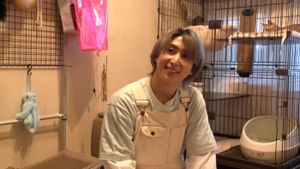Netflix has launched 'Los dos hemisferios de Lucca', a film touching deeply to the audience with its emotional story of love and overcoming adversity. Based on the true-life struggles of journalist Bárbara Anderson, the film narrates her relentless effort to improve the quality of her son Lucca’s life, diagnosed with cerebral palsy.
Since its premiere on January 31, 2025, the film has topped the charts as one of the most viewed titles on the platform. Its success is due to both its moving narrative and the exceptional performances by its cast, including 11-year-old Julián Tello, who makes his film debut as Lucca.
The film is based on Anderson's autobiographical book, documenting the family's arduous quest for medical assistance after Lucca suffered brain damage at birth due to lack of oxygen during complications experienced by his mother, who endured a heart attack. Despite dire forecasts from doctors, who asserted Lucca would likely never walk or speak, Anderson resolved to seek alternatives.
Bárbara recalled the moment of crisis vividly, stating, "En ese momento me fui. Y el cuerpo trata de preservar a la madre, cerrando el cordón umbilical, la vía de oxígeno y sangre. Lo arrancaron como pudieron del canal de parto y nació sin signos vitale" (At this moment, I fainted. And the body tries to preserve the mother, sealing the umbilical cord, the pathway of oxygen and blood. They removed him as they could from the birth canal and he was born without signs of life).
After two months of intensive care, Lucca was discharged, but his family knew they needed to explore various treatment options. Their research led them to the Cytotron treatment device, developed by Indian doctor Rajah Kumar. Cytotron employs magnetic resonance technology, reportedly able to regenerate damaged tissues, and the film showcases its potential to provide significant improvements to Lucca's condition.
The narrative presents how, after just 28 days of treatment, Lucca achieved milestones previously deemed impossible, including walking. This dramatic turn has garnered public interest and hope for families facing similar challenges. Yet, the portrayal of Cytotron has sparked considerable debate within the medical community.
The Mexican Pediatric Society has issued cautions about the use of the Cytotron, emphasizing the lack of substantive clinical trials to support its safety and efficacy. They stated: "No hay ensayos clínicos que demuestren la eficacia del Cytotron en la regeneración neuronal" (There are no clinical trials proving the effectiveness of Cytotron for neuronal regeneration).
Experts stress the importance of evidence-based practices, warning against the dissemination of potentially misleading information, as it may create false hopes for families seeking treatment options. This concern resonates particularly strongly through statements from the Sociedad Mexicana de Neurología Pediátrica: "La información veraz y el acceso a tratamientos adecuados son fundamentales para garantizar un futuro con mayores oportunidades" (Accurate information and access to proper treatments are fundamental for ensuring a future with greater opportunities).
While the film's heartwarming story captivates audiences, it also highlights the urgent need for responsible medical discourse surrounding experimental treatments. Viewers are left to ponder the fine line between hope and reality when it pertains to medical innovation, particularly concerning unverified therapies.
Directed by Mariana Chenillo, 'Los dos hemisferios de Lucca' draws attention not just to the personal story of one family's fight against adversity, but also to broader societal issues faced by those living with disabilities and their pursuit of treatment. With its focus on maternal resilience, the film inspires viewers to reflect on the sacrifices made for loved ones, the struggles of families facing similar conditions, and the necessity of maintaining rigorous medical scrutiny.
For those seeking stories filled with hope and courage, 'Los dos hemisferios de Lucca' stands as a poignant example of the lengths to which one mother went to improve her child’s life, even as it invites viewers to remain vigilant about the scientific validity of the treatments highlighted.



